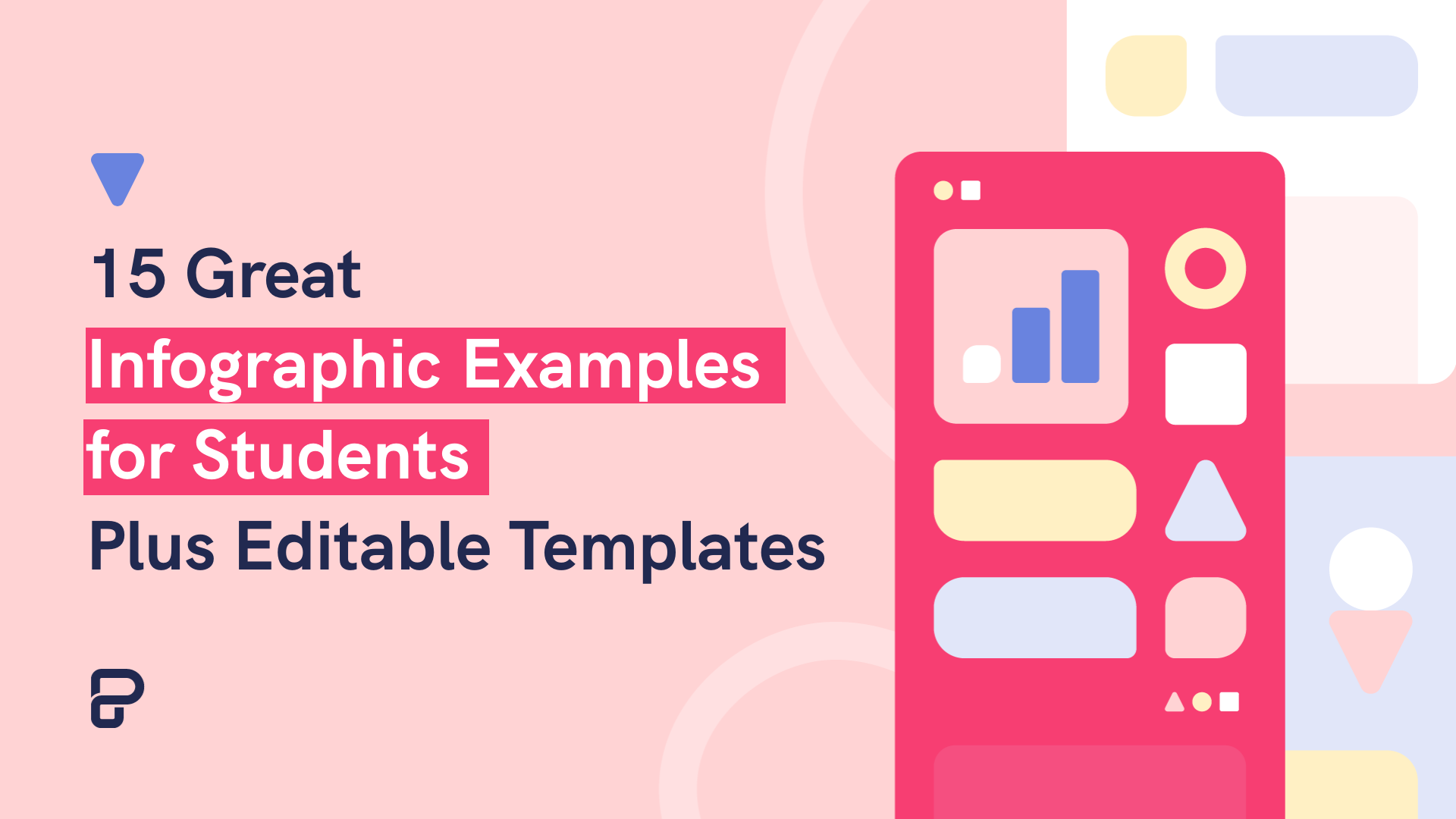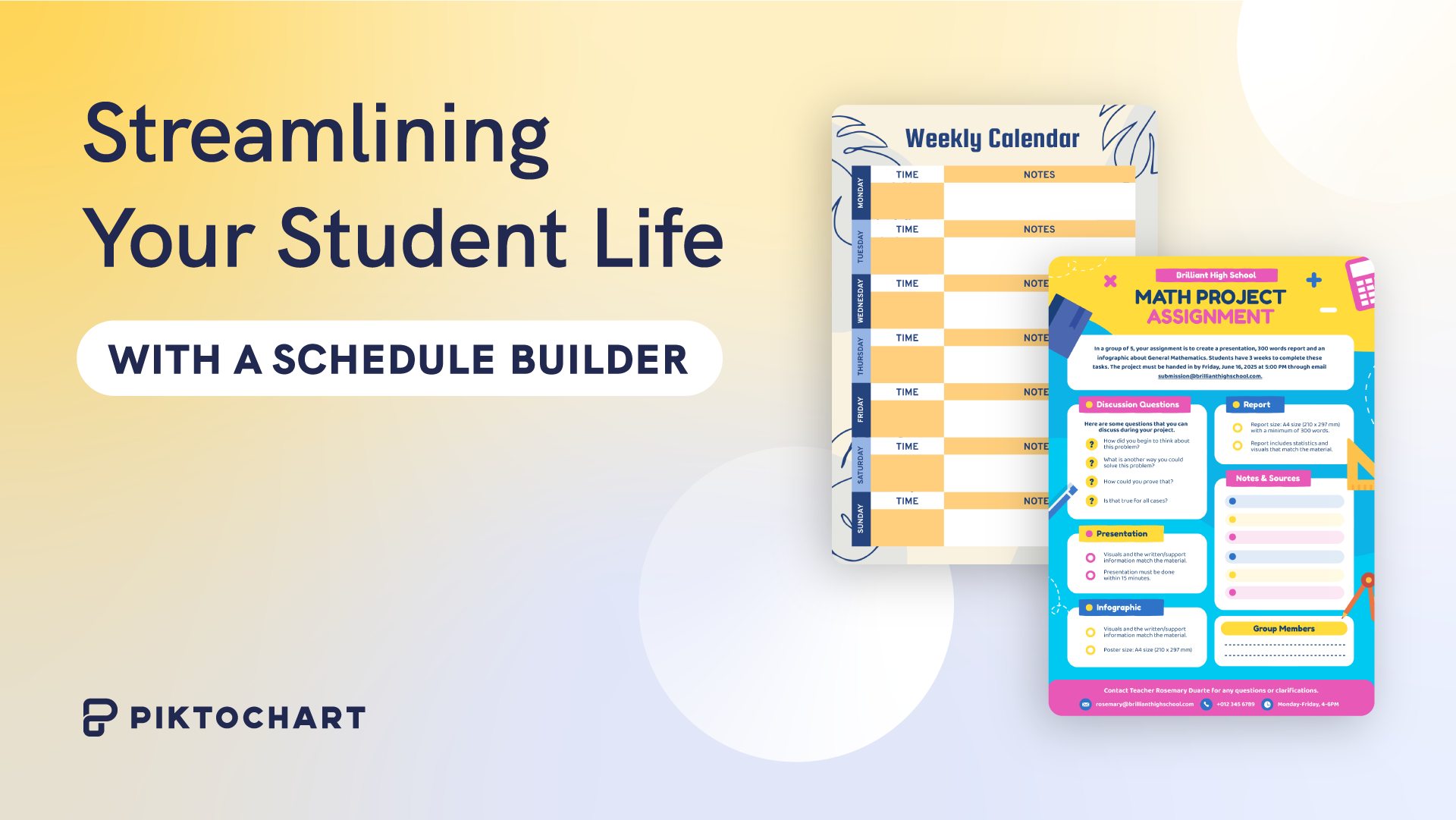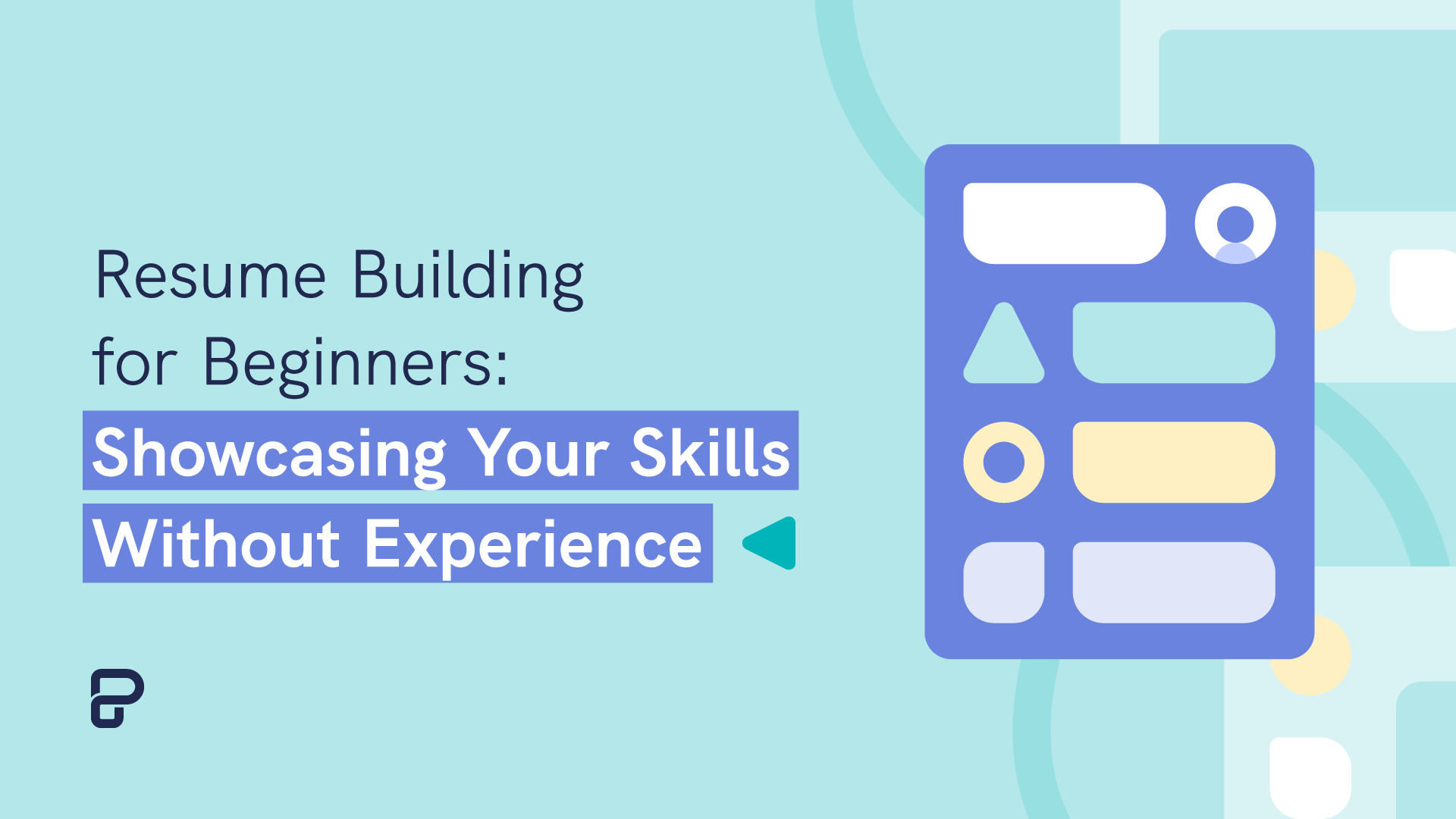Whether you’re a student or a teacher, infographics are one of the best ways to convey your knowledge in the classroom.
With infographics, you can present lessons, excel at homework, or organize data for academic research.
Regardless of your student’s age or IQ, infographics can drill down on essential concepts, clarify complex ideas, and even make dull topics more engaging.
So if you’re looking to use infographics to promote learning among students, you’re in the right place.
In this post, we’ll look at what makes visual content like infographics effective in the classroom and several examples to help you make the most of this teaching strategy.
You’ll also find editable infographic templates that are perfect for whatever subject or topic you’re presenting in class. Let’s get started!
Table of contents
Want to jump right into creating infographics? Sign up for free and get access to our constantly updated library of infographic templates.
How infographics promote student learning
Text-based learning is no match for visual aids such as infographics in the classroom. Many studies have shown that visuals improve learning.
Here are the core benefits of infographics in education:
1. Better retention
Students, like most people, can retain about 10% of what they hear, and just 20% percent of what they read. Do you know how much they retain of what they can see? A whopping 80%.
This makes visuals a great way to ensure students can focus on — and remember more of — what they are learning.
2. High engagement
Infographics don’t just ensure a deeper level of learning, but also keep students engaged. And this is vital in today’s day and age, where attention spans are at an all-time low.
In fact, visual aids can increase the motivation to learn and help prevent dullness during classroom sessions. In short, visuals make learning fun!
3. Easy comprehension
Since infographics use imagery to emphasize and explain text-based content, students can grasp the information much faster than reading plain text.
4. Improved analytical thinking
One of the most essential skills for any student is identifying patterns, deducing logic, and connecting the dots. And visuals help in all these areas because they improve critical thinking, according to research by IISTE.
As the following graph illustrates, students display a higher level of selection, ordering, comparison, and other characteristics when paired with visual learning as compared to traditional learning methods.
For these reasons, it’s evident why more and more educators are looking for ways to integrate visual elements into their curriculums.
Use these infographic examples to inspire your next learning session
Now that you know the benefits of infographics for students, we bet you’re pumped up and ready to create your own infographic.
But where do you start? What type of visuals can you create?
Use the following infographic examples for students as your inspiration.
1. Infographic about sentence fragments and run-ons
This education infographic example shows students how to correct common English errors like sentence fragments and run-ons.
Using white text, for the most part, on a black background makes it highly legible. And the sparingly used blue, green, and purple colors add a nice touch to the whole design. Plus, the light borders and small icons separate and organize each section neatly and beautifully for easy navigation.
2. Let’s explore the ocean infographic
This infographic is great for your next science or geography class. As the information gets dense in the infographic, accenting colors have been used in the background to depict the concept of going deeper into the ocean. As a result, the infographic keeps viewers engaged from start to finish, and the content is easy to follow.
3. Comprehensive guide to mathematics infographic
This infographic example is great for situations when you want to cover a glossary of terms or a list of related items. It covers exactly what’s essential. Nothing more; nothing less.
Each element of the list captures attention instantly, and the icons provide a strong association for students to retain the meanings in the memory.
As a bonus, check out our free math worksheet templates!
4. How to study, get smarter, and succeed in school infographic
While learning different subjects is important, knowing how to learn and succeed is just as vital. This infographic example has an excellent pairing of visual aids with text, making it perfect for creating tips, lessons, and tutorials.
The use of engaging illustrations, excellent typography, and varying backgrounds ensures that students never get bored and scroll through the whole infographic.
5. The life of Leonardo Da Vinci infographic
10 infographic examples and templates for students that are easy to edit and customize
Did the above examples help get your creative juices flowing?
The good news is you don’t need to start creating infographics for education from scratch.
Piktochart has hundreds of pre-made infographic templates you can use to create infographics for students within minutes. On top of that, you don’t need to download or install anything on your computer. Piktochart works right in your web browser.
Watch the short video tutorial below to learn more about making infographics in Piktochart’s free infographic maker.
On that note, here’s a sampling of some of our best infographic examples you can use in the classroom, and how they can be used for educational purposes.
1. Infographic example showing pros and cons
This comparison infographic template is great for teaching students how to compare two concepts, objects, or ideas.
Since you can easily add contrasting information side by side, it is excellent for emphasizing differences and similarities. Not just that, you can later go into details with separate sections for pros and cons.
2. Infographic example visualizing statistics and research findings
Understanding academic research and statistics are one of the crucial skills for students in the 21st century. And it’s a great way to help them quantify the magnitude of abstract ideas. That’s where this infographic template shines.
It says a lot about the link between social media and children’s self-esteem without relying too much on text alone, making statistics and figures easy to understand.
3. Infographic example to help students understand complex information
Informational infographics help students grasp complex topics and technical content with ease. This infographic template is ideal for simplifying complex ideas with visuals like icons and illustrations.
4. Infographic example to help explain timelines
Timeline infographics are great for going over key events in the history of a person, place, or subject.
This template can help students connect events to each other and understand how they shaped the present era. It keeps each event neatly organized and separated from others through rectangle shapes, and also gives you space to add any text, data, or icons.
You can also use a timeline maker, a one-stop shop for inspiration, designing, and sharing in multiple formats!
5. Infographic example inviting students to attend an event or enroll in a course
Looking to generate interest in a course, event, or program? Then this infographic template can get the job done.
With this template, you can make students aware of important events, along with the benefits of attending the program. Plus, it ends with a call to action to further encourage students to enroll in advance.
6. Infographic example about virtual learning
This simple infographic example for virtual learners is packed with tips to make virtual learning fun and comfortable for students and teachers alike. You can edit this infographic with more tips by adding more text boxes.
7. Infographic example explaining the steps of a process
Process infographics work well in the classroom if you want to go into detail about a process or workflow. Use this infographic example to choose a research paper topic idea as your guide. You can customize the texts, color schemes, and illustrations using Piktochart’s powerful yet easy-to-use visual editor.
8. Infographic example about classroom quiz games
Get your students excited about learning by introducing games and quizzes to your class!
The infographic example below also doubles as a classroom poster that you can use to explain how your quiz or game works.
9. Infographic example about class schedules
This fully customizable class schedule infographic template makes classroom schedule documents more fun and engaging for students. Whether you’re scheduling a week or the entire semester, this versatile infographic template has everything you need.
Bonus tip: You can also use infographics for your school syllabus.
Give our class schedule maker a try to access more templates for free! Sign up to access presentations, posters, and more.
10. Infographic example explaining the stages of a lesson
Introduce the stages of a lesson using this simple infographic about the stages of design thinking. The infographic’s layout makes it easy to follow for its audience.
Want to add more stages? All you need to do is duplicate the circles and add your text or content.
Wrapping up: Make infographics for students in minutes with Piktochart
As you can see, infographics are one of the best ways to encourage and enhance learning among students.
Whether you create them for teaching or have your students make them for a project, they always bring more excitement and energy to the classroom.
Recommended reading: A Student’s Guide to Getting Started With Piktochart
No matter the budget or design skill level, Piktochart’s infographic maker can help you design compelling infographics fast.
The templates we covered above don’t just help you create infographics quickly and easily, but can also be used to repurpose other projects to save time in the future.
Give Piktochart a go, and see the difference it can make in your classroom.
Editor’s Note: This blog post is a collaboration between guest post author Hitesh Sahni and Piktochart’s content team.




















